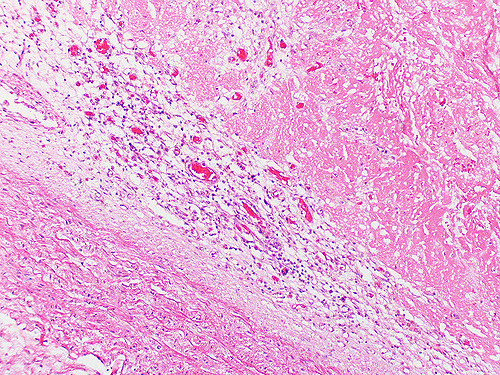One ominous day, in a vein deep inside the leg of the human body, a clot, or thrombus, begins to form. As it grows in size and diameter, it breaks off, escaping into the flow of peripheral blood stream. Pushed by the lub-dub of the heart, the clot reaches the lungs and enters the pulmonary artery. But as it pushes forward to enter the rest of the circulatory system, its large size prevents it from moving any further. As it lodges itself inside of the pulmonary artery, it prevents blood from flowing to the lungs, causing oxygen levels to decrease in the blood while also increasing the risk of lung tissue death. This dangerous situation is known as a pulmonary embolism.
Pulmonary embolisms are caused directly by the movement of a clot to the pulmonary arteries, but these clots, often originally formed in the arms or legs, can initially form for a variety of different reasons. Surgeries, diseases, strokes, infections, childbirth, and smoking, among other things, all lead to an increase in the risk of clot formation. Deep vein thrombosis (DVT) is a condition in which blood clots form in the deep veins, often in the legs. Deep veins, unlike superficial veins, are deep within the body and can often be found next to an artery. DVT is often associated with pulmonary embolisms since these clots tend to have a higher risk of breaking off into the circulatory system.
Image Source: Steve Gschmeissner
Pulmonary embolisms can present some symptoms as well. The most common ones include:
- Chest pain
- Heart palpitations
- Cough (sometimes with blood)
- Excessive sweating
- Dizziness
- Fainting
Treatment of pulmonary embolisms focuses on minimizing the clot in the pulmonary artery and preventing new clots from forming. Often, physicians will prescribe medications called anticoagulants. Anticoagulants prevent clotting factors from functioning normally so that the existing clot cannot increase in size, and new clots become less likely to form. The body begins to heal the clot on its own. However, anticoagulants are provided to prevent the clot from growing in size as the body continues to break down the clot.
Feature Image Source: Organizing thromboembolus in a large elastic pulmonary artery by Yale Rosen










